Tapas - A Symbol of Spain
Wednesday, August 30, 2023
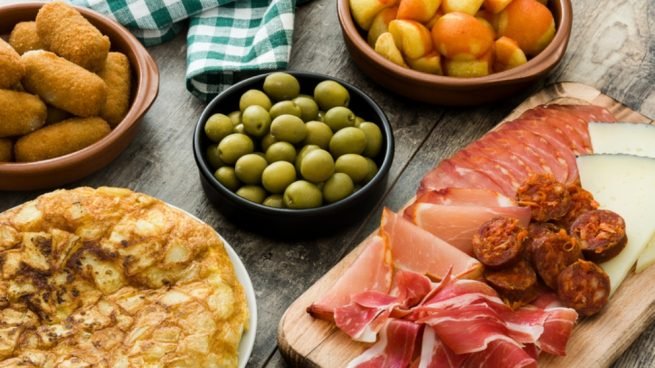
The tapa is one of the definitive symbols of Spanish gastronomy. Exported to much of the world, it is increasingly common to come across a tapas bar in the most unlikely places on the planet: it's quite understandable, everyone likes to eat, drink and a good chat. But despite the considerable international success of the tapa, the specific origin of this gastronomic act is still unknown: why did the famous Spanish tapas emerge?
Most of the versions about the origin of the tapa put its etymology in relation to the act of 'covering' (tapar = cover). In this sense, it is said that since ancient times there would have been a custom associated with taverns, bars and food outlets: putting food - generally ham or cheese - on top of the jug or glass, usually wine. And why on top? Tradition states that the piece of food would prevent insects or dust from entering the wine and that it would retain its flavour longer. It makes sense, doesn't it?
However, there are those who point out that this traditional explanation has a weak point: if the lid covers the wine, what covers the lid?. The insects or the dust would end up on the piece of food something and that would not be too pleasant either.
On the other hand, the term 'tapa' has coexisted for many years with another that refers to a very similar concept: the pincho or pintxo, more common in northern Spain. It would be a "lid" that includes a toothpick to facilitate its handling. Unlike the traditional tapa that is accompanied free with the drink, the northern pincho is not free and it is the diner himself or herself who takes it directly from the bar, where the trays of pinchos are usually displayed.
So when does the concept of a 'cover' appear in literature? In the book 'El Lazarillo de Tormes' drinks were already covered with food, but the name 'tapa' does not appear. Likewise, in Don Quixote or in some of Quevedo's works the same concept is also present, but with different names: 'Callings' in the case of Cervantes' writings, the idea being of 'calling' one's thirst, and 'Warnings' in the case of Quevedo: an aperitif that prepared you for the main dish that was coming later.
The truth is that the Royal Academy of Language has no evidence that the word 'tapa' appeared in any cookbook before the 1930s, pointing out that it is an 'Andalusianism', a term that would emerge in southern Spain and then it would be exported to the rest of the country... and then to the whole world.
Despite the fact that the word 'cover' is less than a century old in its current sense, the legends about its origin go back much further in time. Here are some of the possible 'mythical' origins of the Spanish tapa...
1. Back in the 13th century, Alfonso X El Sabio saw fit to put into practice a decree to ensure the health of the population: he ordered the inns of his kingdom to serve some food accompanying the wine they served in order to 'soften' the effect of the alcohol on the patrons. Apparently, the king had previously been prescribed a glass of wine to treat an ailment and not seeing it clearly, he decided to add a little food ... making him feel much better.
2. Another version of the term could have arisen in a tavern in San Fernando where the Catholic Monarchs stopped off: there were so many flies in that 'shack' that the king asked for a slice of something to cover the wine: “here you have your 'cover', your majesty " he is claimed to have said.
3. In the second half of the 16th century, the French term étape was borrowed and used as 'tapa' in the realm of war: it would refer to the soldiers' rations during a march that lasted more than one day. In this sense, the 'tapa' would have been the place where this snack was made and 'tapear' would be the action of eating it while resting briefly.
4. Just as the modern hamburger could have arisen, the tapa could also have been born from the need to transport the food and drink more comfortably: they say that the gentlemen of the private clubs of Seville went out to order drinks from the nearby 'tablaos' placing a slice of sausage on top so they could free up a hand...practicality.
5. During the 20th century and returning to Andalusia where it is more than likely that the origin of this divine aperitif originated, Alfonso XIII was travelling through Cádiz when he decided to stop at the Ventorrillo del Chato inn by the beach (still located in the same place). He ordered a Jerez wine and the innkeeper quickly came with the glass and a piece of ham that he had placed on top of it to prevent sand on the beach from being blown into the wine by the wind.
Be what it may, the truth is that tapas have become an emblem of Spanish gastronomy, one of Spain's most beloved customs, does it really matter how it originated? I don't think so.
 3
Like
Published at 7:12 PM Comments (0)
3
Like
Published at 7:12 PM Comments (0)
Spain's Sandal that inspired Yves St-Laurent
Friday, August 18, 2023
You may swear by them or recently discovered them this Summer, but shortly it will be time to put them away for next year. I have a couple of pairs, and I just love them. They are so simple yet so versatile in style. The espadrille or alpargata has been around for centuries maybe even thousands of years. The Archaeological museum of Granada owns a pair of espadrilles that were found on human remains inside the “cueva de los murcielagos” (the bat-cave). It is estimated that these shoes are around 4000 years old. Clearly, they are a very primitive version of today’s 'alpargatas'.
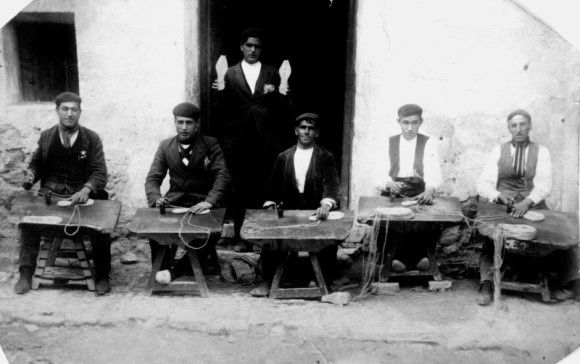
This light sandal, as we know it today, made with jute rope or braided hemp and with linen fabric, originates from Spain, where, already, they were being worn around the XIII century by the King of Aragons’ infantrymen. Its name is derived from “esparto” which is a kind of plant that was originally burned then braided to make the soles. The town of Cervera del Rio Alhama in La Rioja is considered the birthplace of Espadrille manufacturing.
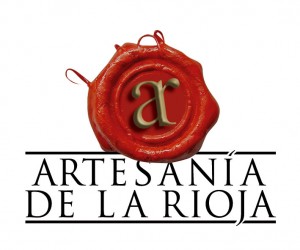 It was during the XIII century that the production of these shoes truly spread. Since it is a handcrafted shoe, making the treads employs many workers. The alpargatero’s (or Espadrille maker) only job was to make the rope soles, while the seamstresses sewed the fabric and the band. At the beginning of the XIX century, Mauléon (a French city located in the Atlantic Pyrenees) began selling them in vast quantities. The first people to wear them were the catalano-aragonese military soldiers then subsequently by the priests. Around 1880, most espadrilles were sold to mine workers, but they were also exported to South America. It was the time of the “hirondelles”, which were young girls from the aragonese valleys who came to work in the espadrille factories between the fall and winter seasons. It was during the XIII century that the production of these shoes truly spread. Since it is a handcrafted shoe, making the treads employs many workers. The alpargatero’s (or Espadrille maker) only job was to make the rope soles, while the seamstresses sewed the fabric and the band. At the beginning of the XIX century, Mauléon (a French city located in the Atlantic Pyrenees) began selling them in vast quantities. The first people to wear them were the catalano-aragonese military soldiers then subsequently by the priests. Around 1880, most espadrilles were sold to mine workers, but they were also exported to South America. It was the time of the “hirondelles”, which were young girls from the aragonese valleys who came to work in the espadrille factories between the fall and winter seasons.
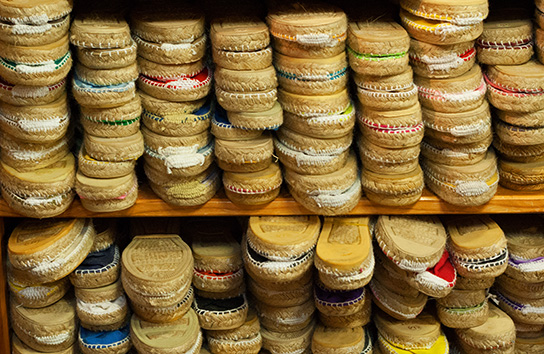

Around 1950, fashion evolved and this forced alpargata makers to reinvent the shoe with a more sophisticated design that was better suited to the times. This contributed, during the 1960s, to a special order of shoes for the Parisian festivities by the most celebrated designer of the time, Mr. Yves St-Laurent. He asked for an espadrille with a heel, which had never been done before. Suddenly, it was all the rage! Today, almost all the women who live in the southern regions have a pair of alpargatas with heels and ribbons that tie around the ankle.
Today, espadrilles are still extremely popular both in France and in Spain, especially in the summer. People seemed to like it because of the sole, which is 100% natural, molds itself to the shape of the foot, and allows the skin to breathe. The simplicity of this shoe makes it very versatile and therefore easy to match with all sorts of different styles. If the espadrille has already been around for 4000 years then it’s not about to go out of fashion now!!
 3
Like
Published at 10:39 PM Comments (1)
3
Like
Published at 10:39 PM Comments (1)
Morella, The King's Town
Sunday, August 6, 2023
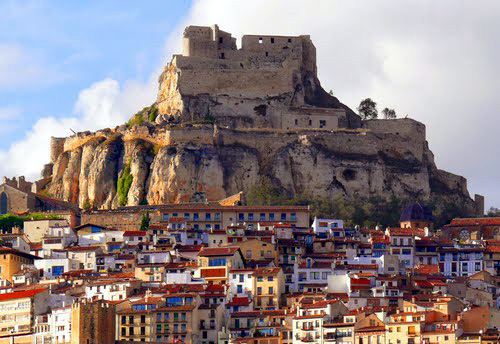 Morella's geographic location has been key over the course of centuries. A Town of passage, a crossroads between the Ebro Valley and the Mediterranean, linking Catalonia, Aragon and Valencia, Morella has witnessed important events throughout its history. Since prehistoric times, times of the Neolithic, Bronze Age, Iberians, Romans, Muslims, Jews, Christians ... everyone saw in this place a fortress with a strategic position. The shape of the city, its castle and walls have witnessed the passing of the likes of Rodrigo Diaz de Vivar, El Cid, who fought two battles in this region to serve the Muslim king of Zaragoza in the eleventh century. Morella's geographic location has been key over the course of centuries. A Town of passage, a crossroads between the Ebro Valley and the Mediterranean, linking Catalonia, Aragon and Valencia, Morella has witnessed important events throughout its history. Since prehistoric times, times of the Neolithic, Bronze Age, Iberians, Romans, Muslims, Jews, Christians ... everyone saw in this place a fortress with a strategic position. The shape of the city, its castle and walls have witnessed the passing of the likes of Rodrigo Diaz de Vivar, El Cid, who fought two battles in this region to serve the Muslim king of Zaragoza in the eleventh century.
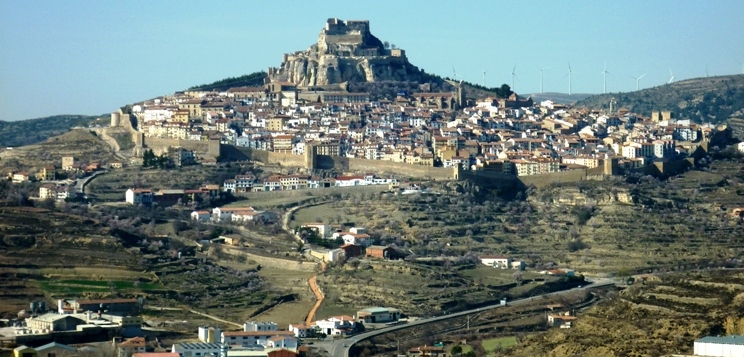
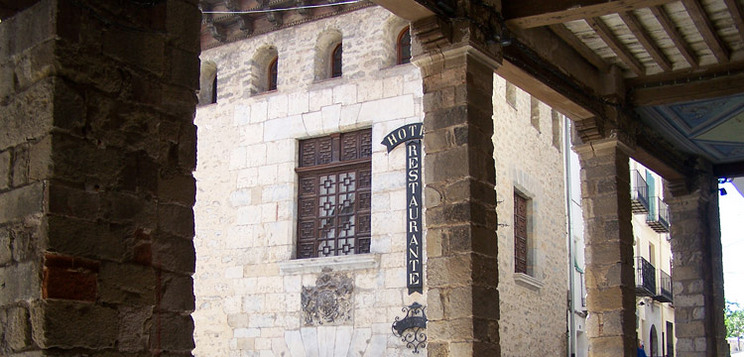
The medieval Christian conquest converted Morella into a town of privileges. Morella was conquered by Christians in October 1231, although on January 7th, 1232 when King James I came triumphantly into the city after tough negotiations with the noble Blasco de Alagón, whom the king had promised could keep as much as he conquered. But the king wanted the walled city and his knight said that "Morella is no place for any man of the world, but for a king because it was as good as a county with their possessions".
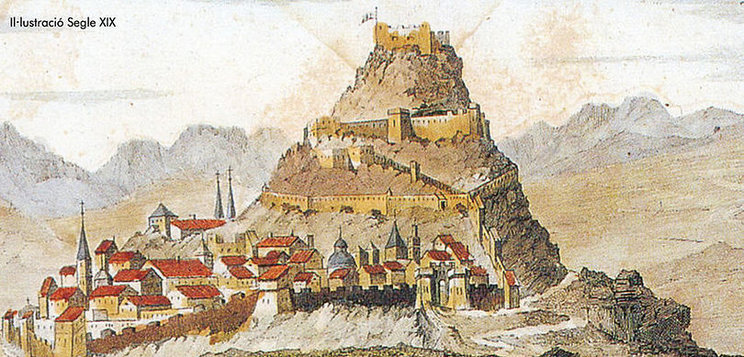
The splendid medieval town is marked by being the axis of the Crown of Aragon, and that Morella would always belong to the King. In 1270 it became part of the Kingdom of Valencia and in the Valencian Parliament, it still occupies the place of the protocol of being 'First Villa' of the Kingdom, just behind Valencia and Xativa. The medieval times were rich, with a society of multiple trade unions, goldsmiths, silversmiths, sculptors, weavers, blacksmiths, and merchants who already travelled to places like Greece, Italy or North Africa.
Another historic moment the city has witnessed was the Compromise of Caspe and the Western Schism. In 1410 Martí l'Humà died without an heir, deciding that his successor would be elected by nine commissioners, one of them was from Morella, Domingo Ram, who, in 1412, when they decided that Fernando de Antequera would be the successor, was bishop of Huesca. In 1414 they met in Morella Pope Luna (Benedict XIII), King Ferdinand I and Fray Vicent Ferrer with the aim of ending the Western Schism, during which time there were three different Popes. The negotiations lasted fifty days without solution, The King and Vicent Ferrer left the obedience of Pope Luna, who remained in Peniscola isolated until his death.
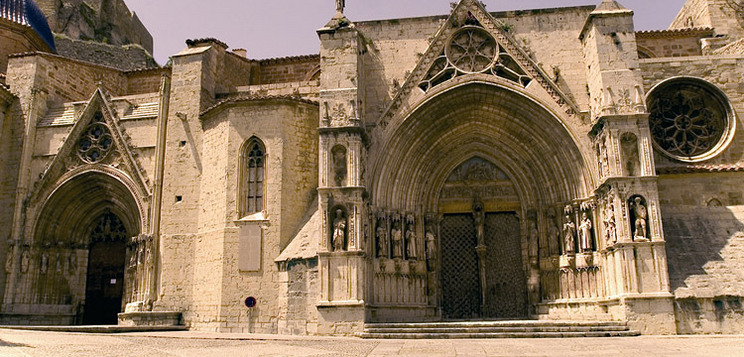
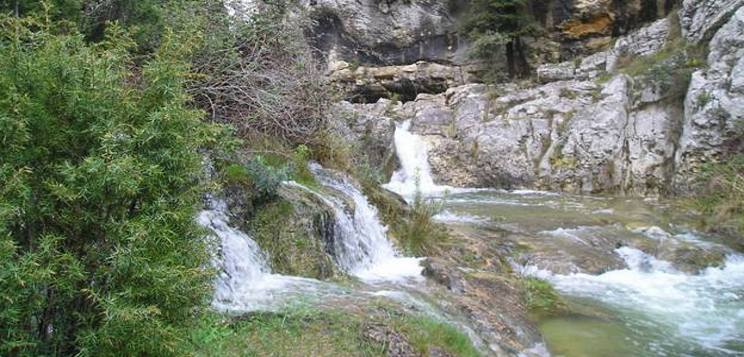
The Succession War also took place in Morella too. During this conflict, local authorities remained with the Borbon side, but two Austrian occupations resulted in the destruction of the neighbourhood of San Miguel. After the bombs, Morella was left with only 1,800 inhabitants but to the astonishment of all, they rebuilt the town. The Decreto de Nueva Planta repealed the existence of the Kingdom of Valencia and Morella came to enforce the laws of Castile.
The Carlist War I is one of the most decisive episodes in the history of Morella. The governor of the town and the Baron de Herbers proclaimed king Carlos V in 1833. The statement did not last long and for two years resisted the area as a small independent state led by General Ramón Cabrera. The wars fought here and in Catalonia predicted more wars in the new liberal state. Reformed the military organization in the area creating the General Command of Maestrazgo (1849-1871) reaching Catalonia, Aragon and Valencia and Morella was its capital, as it was done later to maintain the capital of the province of Castellón and south Tarragona (1871-1879). But once the Third Carlist War finished the military province returned to conform to civil boundaries. Ramon Cabrera, the Tiger of Maestrazgo came to deserve the title of Conde de Morella. After the conflict and after marrying a British noble went into exile in London, repenting of so much bloody battle. In the British capital, there is a street dedicated to Morella, the one where the general lived.
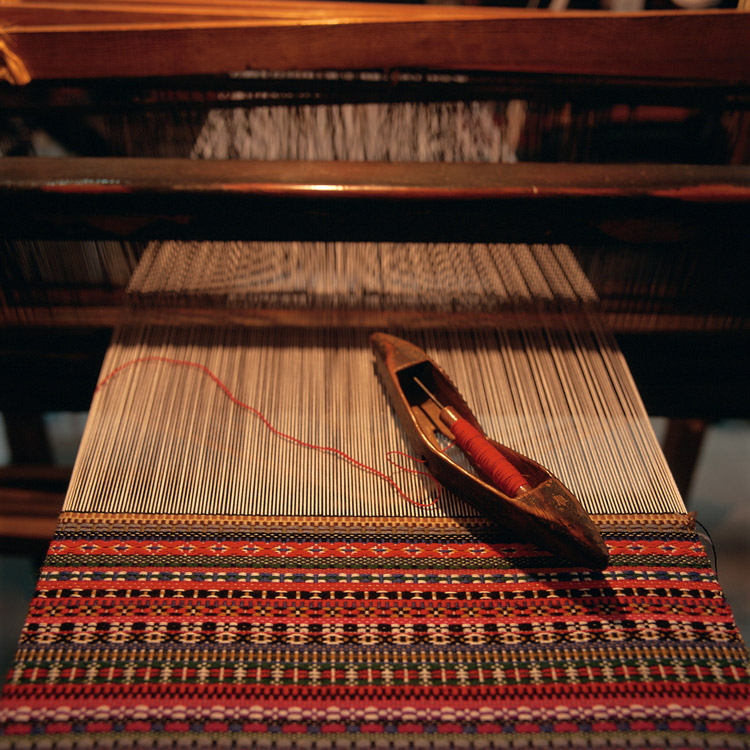 The textile tradition of Morella is one that has lasted to the present day, especially wool, one of the oldest economic activities in this city and the whole region. This activity dates back to the thirteenth century. During the Middle Ages, Morella was literally a textile factory; the wool sheared from their flocks was by the workshop and spindle in every household. The city had hundreds of looms. They wove carpets, fabrics and clothes, cordellats, barraganes and tartans, wool, cotton, linen... At that time, Morella traded with other Mediterranean countries, especially Italy, which provided them with textile products. The textile tradition of Morella is one that has lasted to the present day, especially wool, one of the oldest economic activities in this city and the whole region. This activity dates back to the thirteenth century. During the Middle Ages, Morella was literally a textile factory; the wool sheared from their flocks was by the workshop and spindle in every household. The city had hundreds of looms. They wove carpets, fabrics and clothes, cordellats, barraganes and tartans, wool, cotton, linen... At that time, Morella traded with other Mediterranean countries, especially Italy, which provided them with textile products.
Later, in the eighteenth, nineteenth and twentieth century, the most important products were bags, belts, blankets of Morella, blankets for the mules and shepherds. There are still some industries that you can visit that produce blankets, belts, bags and beautiful colourful paintings of great quality. It is a creative handcrafted activity, handed down from generation to generation.
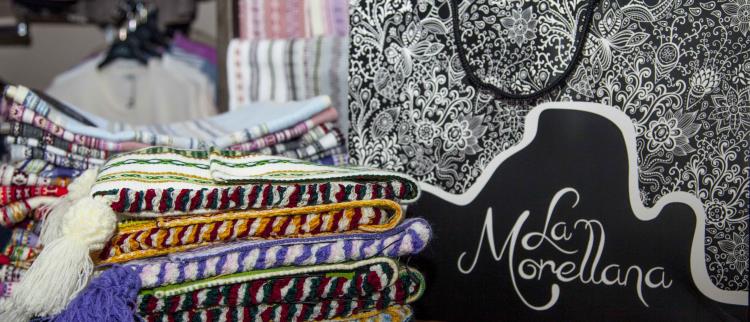
During the nineteenth and early twentieth centuries, the population lived exclusively from textile production and derivatives such as dyeing, thanks to important industrial complexes such as the Factory Giner that established an important connection with the Catalan industry.
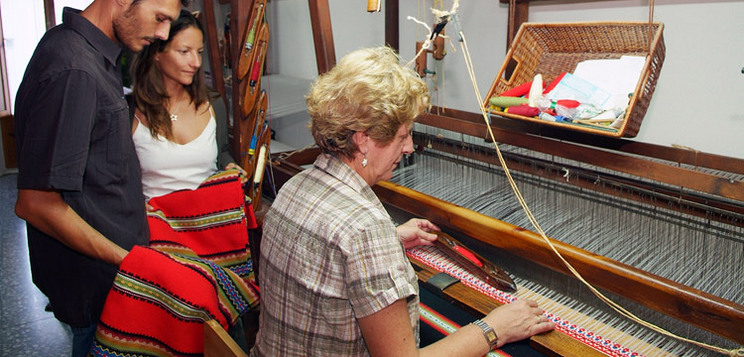
The blanket of Morella is unique in its design, its horizontal stripes and the combination of colours. They are made of wool and cotton and are available in various establishments that sell craft products and clothing. These fabrics have evolved in terms of functionality and we can buy them not only as blankets or quilts, but also to create curtains, table runners, cushions, bags, even clothing and accessories for cultural and festive costumes.
Another reason to visit Morella is the new Morella Astronomical Observatory, located in the Torremiró rest area, highway N-232 allows one to look at the sky in the middle of nature. It is a privileged place without light pollution, with excellent conditions for observing the night sky. A high-quality telescope allows us to see the stars, the rings of Saturn, the craters on the moon, meteor showers, tears of San Lorenzo ... Throughout the year there are guided tours. The Centre is coordinated by the local association Astromorella and for any questions, contact the Tourist Office of Morella. They often organise observation nights which cost around €8 a person.


Tourist Info Morella
San Miguel square
Tel. 964 173 032
e.mail morella@touristinfo.net
 0
Like
Published at 12:15 PM Comments (0)
0
Like
Published at 12:15 PM Comments (0)
Spam post or Abuse? Please let us know
|
|